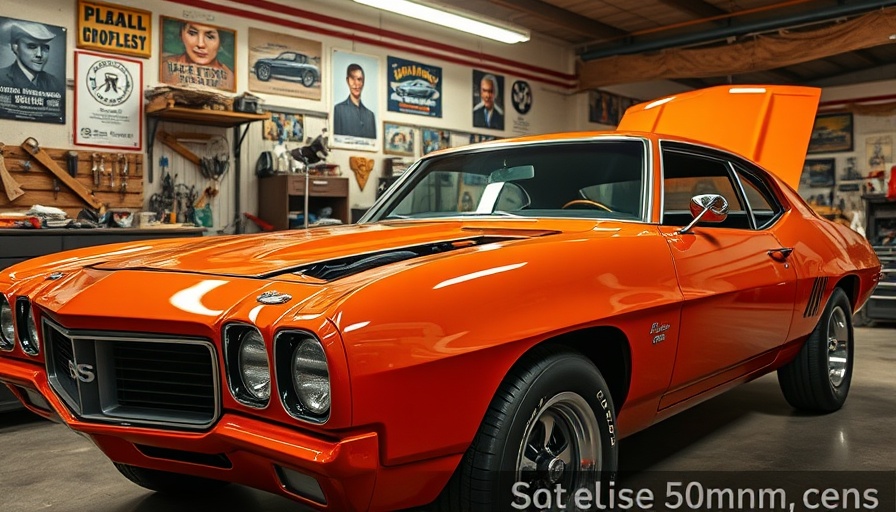
Understanding the 2025 Auto Tariffs: A Turning Point for American Manufacturing
On April 2, 2025, President Trump signed a pivotal executive order introducing a sweeping 10% minimum tariff on all U.S. imports, effective immediately. The auto industry felt this impact strongly as the administration also implemented a hefty 25% tariff on imported vehicles and parts—actions that signal a marked shift in U.S. trade and industrial policy.
But what does this mean for automakers, buyers, and bidders, especially within the burgeoning used car market? The tariffs are designed not merely to raise costs on imports but to reinvigorate domestic manufacturing and diminish dependence on foreign supply chains. The implications of this policy extend far beyond mere pricing adjustments for consumers.
The Tariff Landscape: What Every Driver Should Know
The imposition of a 25% tariff on imported vehicles and parts, alongside a 10% tariff on general imports, is part of a broader strategy aimed at encouraging investment within the U.S. manufacturing sector. This strategy is expected to create a ripple effect across the automotive landscape, affecting product pricing and availability.
With imports from countries including Canada, Mexico, China, Japan, and Germany now subject to these tariffs, automakers are scrambling to assess their strategies. Several have declared temporary production changes or shipment delays due to the added costs. For instance, Stellantis has decided to pause shipments from Mexico and Canada, while others have begun offering limited-time incentives to offset price hikes anticipated from the tariffs.
Impact on the Automotive Industry
Assessing the Reaction of Automakers
The announcement of the tariffs has resulted in immediate and significant shifts within the auto industry. Many vehicles manufactured in the United States rely heavily on imported components. Models such as the Ford Mustang Mach-E are affected as they depend on international parts, leading to potential supply shortages.
Some automakers, like Honda, are proactively addressing these challenges by ramping up efforts to localize production. Honda aims to produce a remarkable 90% of vehicles sold in the U.S. domestically, signifying a substantial shift away from reliance on foreign manufacturing. However, with localization requiring time and investment, the transition presents its own set of challenges.
Benefits and Opportunities: The Silver Lining to Tariffs
Although critics of tariffs often emphasize negative outcomes, supporters highlight several potential advantages stemming from these policies. The revitalization of domestic manufacturing stands as a primary point of discussion. By making imported goods more expensive, proponents argue, the tariffs could create sufficient incentive for companies to invest in local manufacturing capabilities, leading to job growth and an organized return to American-made products.
Moreover, the rebalancing of trade relationships could foster greater economic independence while also reducing vulnerability to global supply chain disruptions—a lesson profoundly underscored during recent global events. Some analysts suggest that invigorating domestic production might just be the remedy needed to revive local economies.
Consumer Choices and Market Impacts: What to Expect Moving Forward
The ramifications of these tariffs also extend to consumers. Higher prices for new vehicles and parts could make them less accessible for many buyers. In this challenging climate, potential buyers might reconsider their options when approaching the used car market, where pricing dynamics could also shift significantly depending on inventory availability.
For instance, prospective buyers should be increasingly vigilant about the components that make up the vehicles they consider. Understanding the long-term value, including potential maintenance needs, will be essential in navigating this evolving marketplace.
Practical Tips for Drivers: Navigating Future Maintenance Needs
As the automotive industry adjusts, potential car owners should revisit their car maintenance schedules, ensuring vehicles remain in optimal condition amidst a potentially tightening supply chain. Here are a few practical maintenance tips:
- Regular maintenance checks: Ensure to adhere to a vehicle maintenance checklist, which includes timely oil changes (commonly every 3,000 to 5,000 miles).
- Tire rotation schedule: Keep tires in good condition by rotating them according to manufacturer recommendations to extend their lifespan.
- Stay aware of warning lights: Learn how to check for common issues like check engine lights or transmission fluid levels.
- Consider long-term needs: If you’re eyeing a vehicle, research its maintenance history and expected repairs before making a purchase.
The Road Ahead: Insights from the 2025 Auto Tariffs
As we observe the unfolding effects of the 2025 auto tariffs, it's evident that this policy shift will redefine the automotive landscape in the U.S. With many manufacturers scrambling to mitigate operational disruptions and the potential for consumer price increases, awareness and proactive planning will be crucial for everyone involved in the automotive sector—whether they are behind the wheel or under the hood.
In conclusion, as these new tariffs come into play, stay informed about the adjustments within the market. Understanding how these changes affect automotive buying and maintenance will undoubtedly empower consumers to make savvy decisions in the months ahead.
 Add Row
Add Row  Add
Add 




 Add Row
Add Row  Add
Add 

Write A Comment